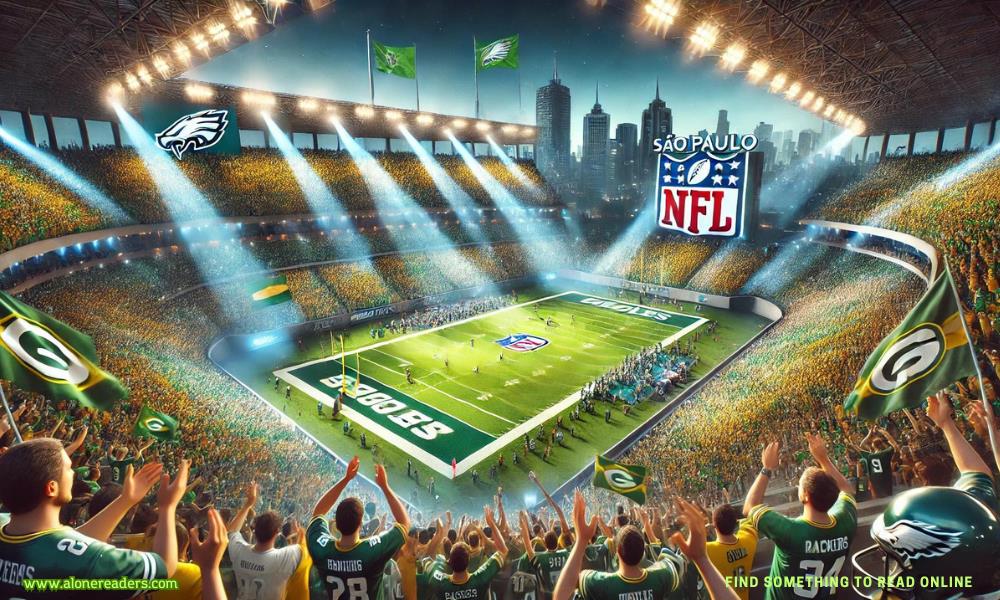
The Philadelphia Eagles made history on Sunday, playing the Green Bay Packers in the first NFL game ever held in the Southern Hemisphere. The landmark event took place in São Paulo, Brazil, at the Arena Corinthians, drawing in fans from across the Americas and beyond. In a thrilling contest, the Eagles narrowly defeated the Packers 34-29, showcasing not just the popularity of American football but its growing international appeal. The event marked a milestone in the NFL’s global expansion efforts and opened new horizons for the league, making a significant impact on the local Brazilian sports scene.
The decision to bring an NFL game to Brazil was part of a broader strategy by the league to internationalize the sport. While the NFL has held games in Europe and Mexico, this was the first time it ventured into the Southern Hemisphere, choosing São Paulo as the ideal location due to its vibrant culture, large population, and the growing enthusiasm for American football in the region. Brazilian fans have been following the NFL for years through cable networks and social media, and the chance to see a live game brought many out in force. The atmosphere in São Paulo was electric, with fans of both teams turning out in their jerseys, waving flags, and embracing the energy of a sport that is still relatively new to the country.
The game itself lived up to the hype. The Philadelphia Eagles, led by their star quarterback, delivered a strong performance, demonstrating why they are considered one of the most formidable teams in the NFL. However, the Green Bay Packers, a team with a storied history, were not to be outdone. Despite missing a few key players due to injuries, the Packers kept the game close, and at times, it seemed they might walk away with the victory. The lead shifted back and forth throughout the game, with both teams giving their all in a fast-paced and high-intensity contest.
In the first half, the Packers got off to a strong start, quickly establishing a lead with a series of impressive plays. Their quarterback connected with his wide receivers on a number of long passes, slicing through the Eagles' defense. But the Eagles were not far behind, with their offense finding rhythm as the second quarter progressed. By halftime, the game was tightly contested, with only a few points separating the two teams.
The second half was where the Eagles began to take control. Their defense tightened up, limiting the Packers' offensive opportunities and forcing a couple of turnovers that shifted the momentum. On the offensive side, the Eagles capitalized on every opportunity, executing some well-planned drives that resulted in crucial touchdowns. However, the Packers refused to give up, responding with a late-game rally that had fans on the edge of their seats. With just minutes left in the game, the Eagles held a narrow five-point lead. The Packers mounted one final drive, pushing deep into Eagles' territory, but the Eagles’ defense held strong, stopping the Packers just short of a game-winning touchdown.
When the final whistle blew, the Philadelphia Eagles had secured a 34-29 victory. The Eagles' quarterback, who threw for over 300 yards and multiple touchdowns, was named the game’s MVP, but it was a team effort that secured the win. The Packers, though disappointed, could hold their heads high after a valiant effort in a game that could have gone either way.
The success of the game in São Paulo not only thrilled American football fans but also opened doors for the NFL in Brazil and other parts of the Southern Hemisphere. Brazil is a soccer-dominated country, but the excitement surrounding this NFL game showed that there is room for American football in the Brazilian sports landscape. The crowd of nearly 60,000 fans—many of whom were new to the game—cheered with the same passion they usually reserve for their beloved soccer teams. The NFL, noticing this enthusiasm, may now consider scheduling more games in Brazil and possibly other parts of South America.
The event’s success can also be attributed to the NFL's outreach efforts. Prior to the game, the league held a number of events across São Paulo, introducing the basics of American football to fans who may have been unfamiliar with the rules and the strategy. Clinics were held for children and young adults, where they could learn how to throw a football, understand the fundamentals of the game, and even meet some of the players. The NFL also collaborated with local sports broadcasters and social media influencers to build excitement in the lead-up to the game, which proved to be a winning strategy.
For the NFL, the game was about more than just expanding its fan base—it was about proving that American football has global appeal. The league’s long-term vision includes establishing a stronger presence in international markets, and Brazil, with its huge population and sports-loving culture, is a key part of that strategy. The success of this game could lead to more regular-season matchups in Brazil, as well as the establishment of grassroots programs to nurture local talent. Who knows? In the future, we may even see Brazilian-born players taking the field in the NFL.
In conclusion, the first NFL game in the Southern Hemisphere was an unforgettable event, not only for the Eagles and Packers but for the entire global football community. The Philadelphia Eagles’ 34-29 victory was hard-fought and well-earned, but more importantly, the game symbolized the NFL's growing international ambitions. As the league continues to expand its reach beyond American borders, events like this will serve as milestones, bringing the excitement and energy of the NFL to new and diverse audiences across the world. For the fans in São Paulo, it was an experience they are unlikely to forget, and for the NFL, it was a successful first step in a larger global journey.